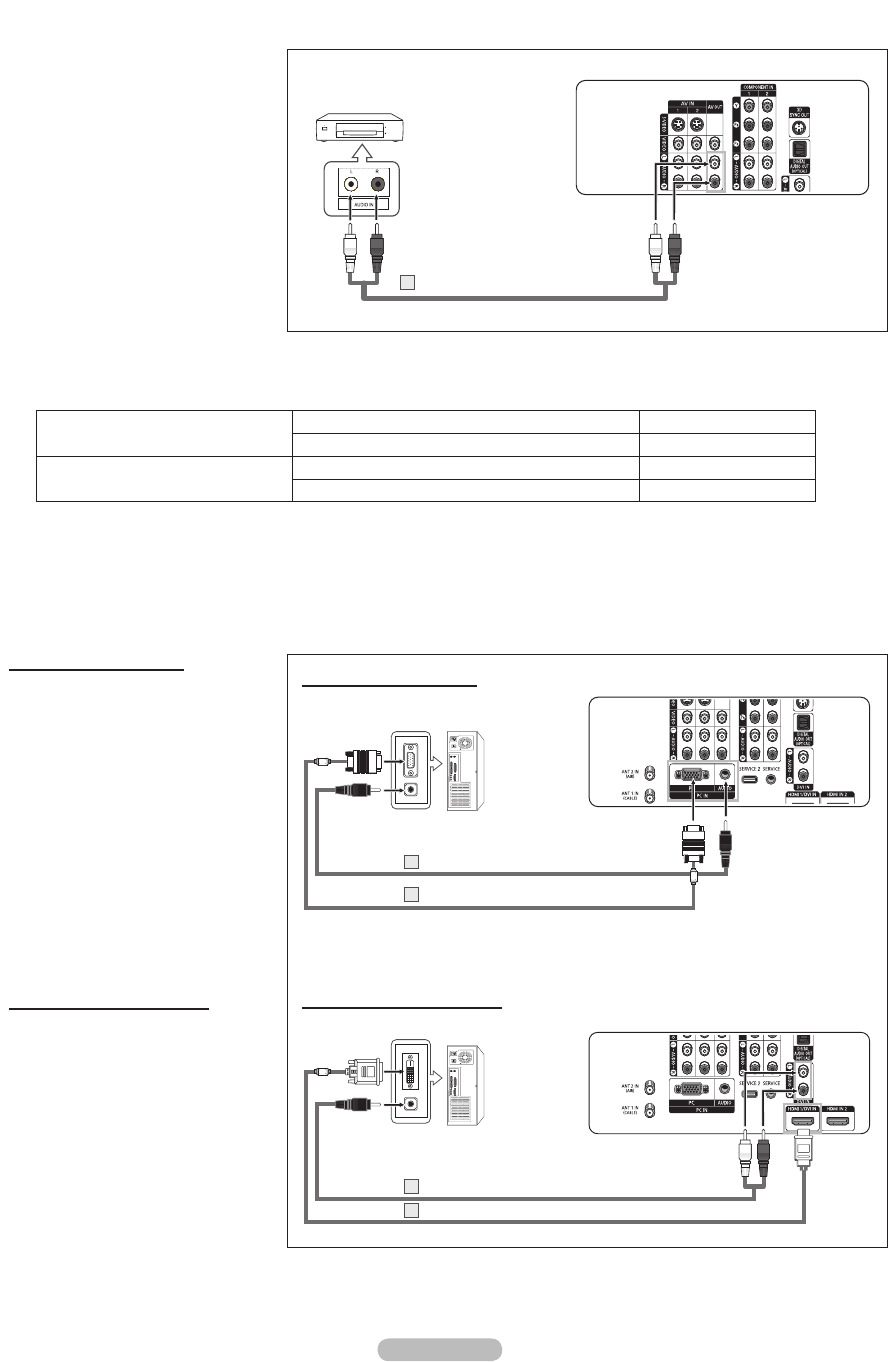
English - 15
➢
Each Amplifier/DVD Home Theater has a different side panel configuration.
➢
When connecting an Amplifier/DVD Home Theater, match the color of the connection
terminal to the cable.
Connecting an Amplifier/DVD Home Theater
1 Connect Audio Cables between the
AUDIO OUT [L-AUDIO-R] on the TV
and AUDIO IN [L-AUDIO-R] on the
Amplifier/DVD Home Theater.
When an audio amplifier is
connected to the “AUDIO OUT
[L-AUDIO-R ]” terminals: Decrease
the gain (volume) of the TV, and
adjust the volume level with the
Amplifier’s volume control.
Connecting a PC
Using the D-Sub Cable
1 Connect a D-Sub Cable between the
PC IN [PC] jack on the TV and the
PC output jack on your computer.
2 Connect a PC Audio Cable between
the PC IN [AUDIO] jack on the TV
and the Audio Out jack of the sound
card on your computer.
➢
Each PC has a different side panel configuration.
➢
When connecting a PC, match the color of the connection terminal to the cable.
TV Side Panel
Audio Cable (Not supplied)
1
Amplifier/
DVD Home Theater
TV Side Panel
PC
PC Audio Cable (Not supplied)
2
D-Sub Cable (Not supplied)
1
TV Side Panel
PC
HDMI/DVI Cable (Not supplied)
1
1Stereo/2RCA Cable (Not supplied)
2
Using the HDMI/DVI Cable
1 Connect a HDMI/DVI Cable between
the HDMI1 jack on the TV and the
PC output jack on your computer.
2 Connect a 1Stereo/2RCA Cable
between the DVI IN jack on the TV
and the Audio Out jack of the sound
card on your computer.
Using the D-Sub Cable
Using the HDMI/DVI Cable
AV OUT L-AUDIO-R
RF (Analog), AV, S-Video, Component, HDMI
Sound is output
RF (Digital) Sound is not output
DIGITAL AUDIO OUT (OPTICAL)
RF (Digital/Analog), AV, S-Video, Component
Sound is output
HDMI Sound is not output
➢
If you want to play movies by connecting DVD Player or Set-Top Box to the COMPONENT IN jacks on the TV,
connect the Optical OUT jack on the DVD Player or Set-Top Box to an Amplifier or DVD Home Theater.


















